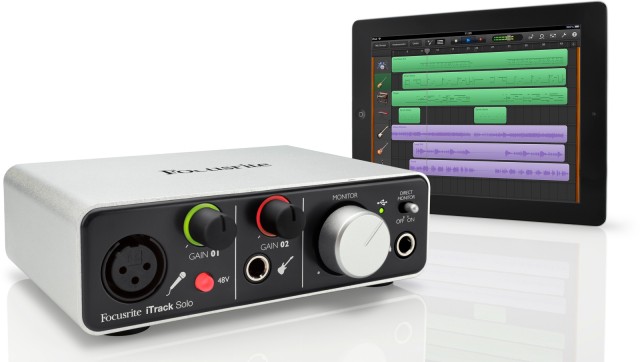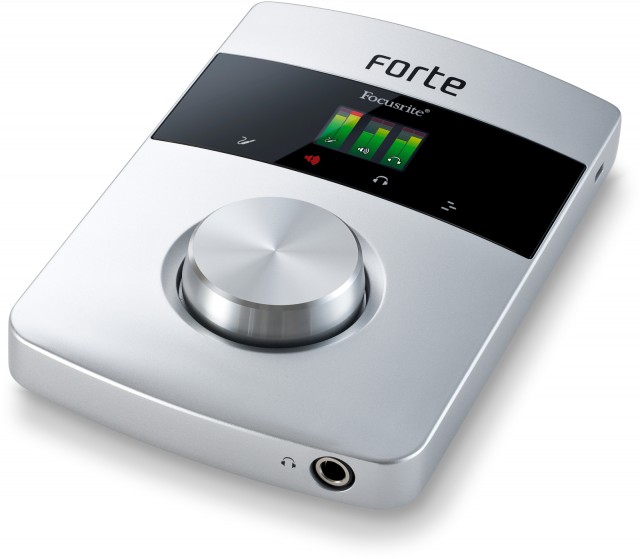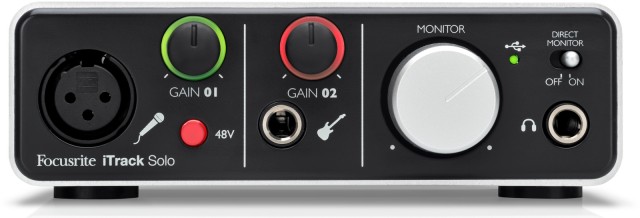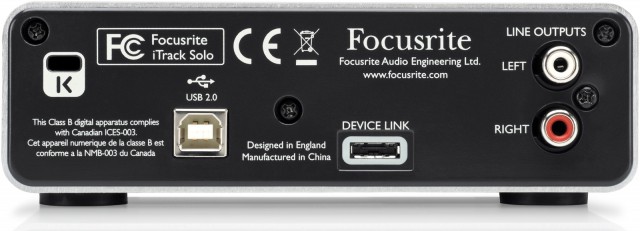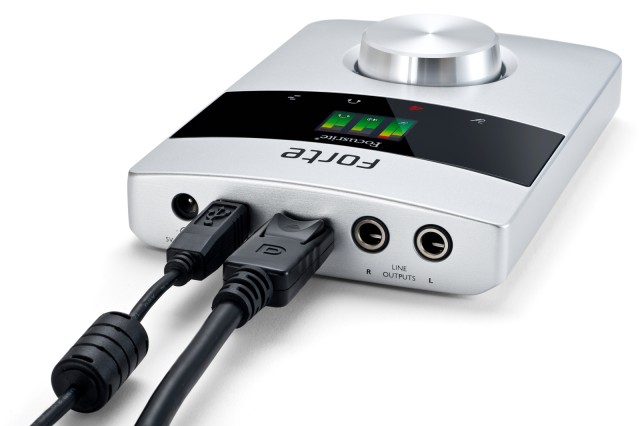
From top, the iTrack for iPad, and Forte, a “flagship” interface for Mac and Windows. All images courtesy Focusrite.
There’s no shortage of audio interfaces out there, but quality can be variable. Focusrite claims two new interfaces are focused squarely on “premium” quality. On paper, at least, they have some specs to back it up. And while fidelity is an emphasis, each interface is designed for simple recording scenarios – meaning, for those people who want something compact that sounds good but doesn’t necessarily overload them with inputs and outputs they don’t need. The Forte is a “flagship” audio interface whose compact design should position it directly opposite offerings from Apogee – albeit, unlike the Apogee entries, with support for both Windows and Mac and not just Apple machines. The iTrack is even more unique: it’s an iPad audio interface that has the form factor, I/O, and quality claims you’d generally associate with a desktop interface.
We have some specifications and images from Focusrite; we’ll be able to judge quality when these devices ship next month.
Forte
- USB 2.0
- 2x remote-control mic preamps (from Focusrite’s RedNet pro range), 75dB gain range (0-75dB).
- 24-bit, 192 kHz ADC (117dB A-weighted) and DAC (118dB A-weighted) converters
- Color OLED screen with intput and output levels, mic preamp gain, and other motion graphic feedback
- Control knob with touch-sensitive icon buttons
- Breakout cable with locking connector: XLR, TRS (line/instrument) inputs, each on separate connections
- Balanced line and independent headphones outs
- Aluminum case, non-slip strips
- External power (included) or USB power
Price US$749.99 list, US$599.99 street.
I have to say, I do notice some unique details here. Some interfaces from pro brands, marked pro, nonetheless substitute components on the less-expensive models or those with less I/O; it appears Focusrite isn’t doing that here. Having those balanced outputs on the unit itself means you only need the breakout when recording, also useful – it’s easy to imagine this being an ideal live performance interface. And the OLED display is something we’ve only seen on things like the Teenage Engineering OP-1; it’s nice to see that in an audio interface.
By the way, before someone complains about the absence of USB 3.0:
1. USB 2.0 suits a device with this number of I/O just fine.
2. USB 3.0 seems not ready for prime-time, if compatibility issues we’ve seen on Mac and Windows are any indication.
In other words, there’s no reason for a maker to invest in a newer, less-tested chipset to get functionality they don’t need. Those same vendors who do need that extra bandwidth appear to be turning to Thunderbolt, not USB3. End of mini-rant.
Speaking of which, here’s Focusrite on Mountain Lion compatibility:
focusrite.com/news/osx-mountain-lion-compatibility
Simon Halstead from Focusrite shares some additional insights into the design of the hardware with CDM:
Forte is designed to give people the best performing USB interface available – pretty much as simple as that. The hardware design was fraught with difficulty; here are just a few examples:
The display – as well as an OLED, Forte uses IMB (in-mold labeling), so the function icons appear beneath the screen – this is difficult and took a lot of tweaking. The icons are touch-sense activated; this isn’t much of a challenge on a flat surface, but Forte is curved, so again this took considerable dev & test time to bring up to a satisfactory level. Physically fitting the components in such a small case was a massive challenge – we didn’t want to compromise on component spec (and thus audio performance) – but we didn’t have a lot of space to play with so the board had to be very carefully designed. For example, we didn’t want to employ a codec (despite their more compact dimensions) instead we opted for separate AD / DA converters, then had to work out how we’d fit them in…
Video:
focusrite.com/usb-audio-interfaces/forte
iTrack Solo
The pitch here is simple: combine a Focusrite mic pre with an iPad interface. The downside: full-size I/O means a form factor more like a desktop interface, so I don’t think this will satisfy people wanting an ultra-compact iPad in and out with no-compromise sound. But if you’re willing to pair your svelte iPad with something that looks more like a PC accessory, it could still be fantastic – and we’re talking substantially less weight than a laptop and its big power brick, so still optimal for mobile recording, without question. (Benjamin Weiss from DE:BUG Magazine recorded 24 hours of live music at a session on which I played at about:blank here in Berlin. This would have been an ideal substitute for the audio interface.)
- 24-bit, 96 kHz audio interface you can use with any iPad app.
- Works with Windows and Mac, too.
- “Low-distortion, low-noise” mic pre straight out of Focusrite’s high-end Liquid Saffire 56 interface.
- Phantom power, so you can use your condenser mic.
- Instrument input ideal for guitar and bass.
- Monitor knob for output level.
- “Halo” indicators around input knobs show if your signal is too hot (by changing from green to red).
- Layout, functionality, guts adapted from the Scarlett 2i2 USB interface.
- USB power via included cable.
- Rear-panel phono connectors for line-level output.
- Aluminum unibody case.
MSRP $199.99 / $159.99 street.
Video:
Again, here’s Focusrite/Novation on their approach to this hardware:
iTrack is really about opening up iPad musicians to good quality recordings – we put the same mic pre as in our Firewire interfaces (A-weighted with 109dB dynamic range). Main user-case is producers who want to simplify their secondary rig – allowing them to track easily without compromising conversion & dynamic range. Obvious scenario is tracking guitar+vox. The engineering trade-off was using components that required more power than iPad dock can deliver so conversion, gain & dynamic range weren’t compromised. In short we wanted to make a pro interface for iPad – not a toy!
That to me is appealing, and having waited for an appropriate audio interface on iPad, this could be it. Stay tuned for more.
focusrite.com/ipad-audio-interfaces/itrack-solo
